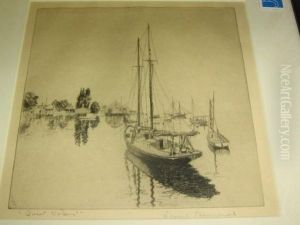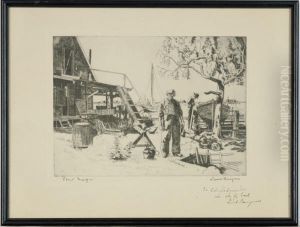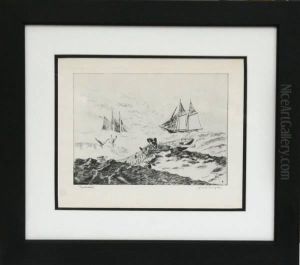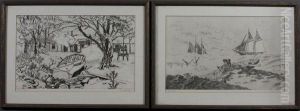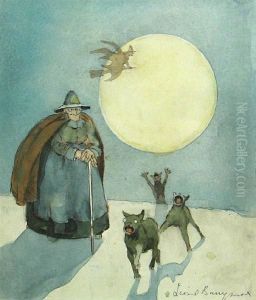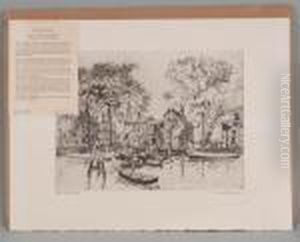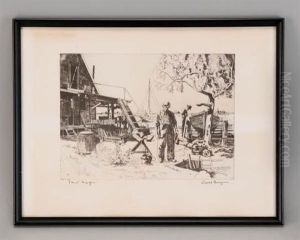Lionel Barrymore Paintings
Lionel Barrymore was a versatile and acclaimed American actor of stage, radio, and film, born Lionel Herbert Blythe on April 28, 1878, in Philadelphia, Pennsylvania. He hailed from the Barrymore family, one of the most important and influential families in the American theater. He was the elder brother of Ethel Barrymore and John Barrymore, making him an uncle to the famous actor John Drew Barrymore and great-uncle to actress Drew Barrymore.
Lionel Barrymore's career spanned over six decades, beginning with his stage debut in 1893. He initially followed the path of his parents, who were actors, and soon distinguished himself as a talented performer. His early career was marked by appearances on Broadway, where he honed his craft and gained popularity. In addition to acting, he also directed stage productions and occasionally worked as a playwright.
Transitioning from the stage to the screen, Barrymore became a silent film star and later successfully navigated the transition to talkies, showcasing his deep, resonant voice. His film career included a variety of roles that demonstrated his range, from leading men to villainous characters. He won an Academy Award for Best Actor for his role in 'A Free Soul' (1931), where he played an alcoholic lawyer defending his daughter's gangster boyfriend, played by Clark Gable.
Barrymore was also known for his portrayal of Dr. Leonard Gillespie in the popular 'Dr. Kildare' movie series throughout the 1930s and 1940s. His other notable films include 'Grand Hotel' (1932), 'Dinner at Eight' (1933), and 'You Can't Take It With You' (1938). His portrayal of Mr. Potter in Frank Capra's 'It's a Wonderful Life' (1946) remains one of his most memorable roles, showcasing his ability to play a compelling antagonist.
In addition to his film work, Barrymore had a successful radio career. He was a frequent guest on various radio shows and had his own show, 'The Lionel Barrymore Show'. His distinctive voice made him a natural for radio, and he often performed on dramatic anthology series such as 'Lux Radio Theatre' and 'Suspense'.
Throughout his life, Barrymore faced personal challenges, including the death of his second wife, actress Irene Fenwick, in 1936, and his own health issues which eventually led to his confinement to a wheelchair. Despite these difficulties, he continued to act until his death on November 15, 1954, in Van Nuys, California. Lionel Barrymore's legacy lives on through his contributions to the performing arts and his influence on generations of actors to come.
